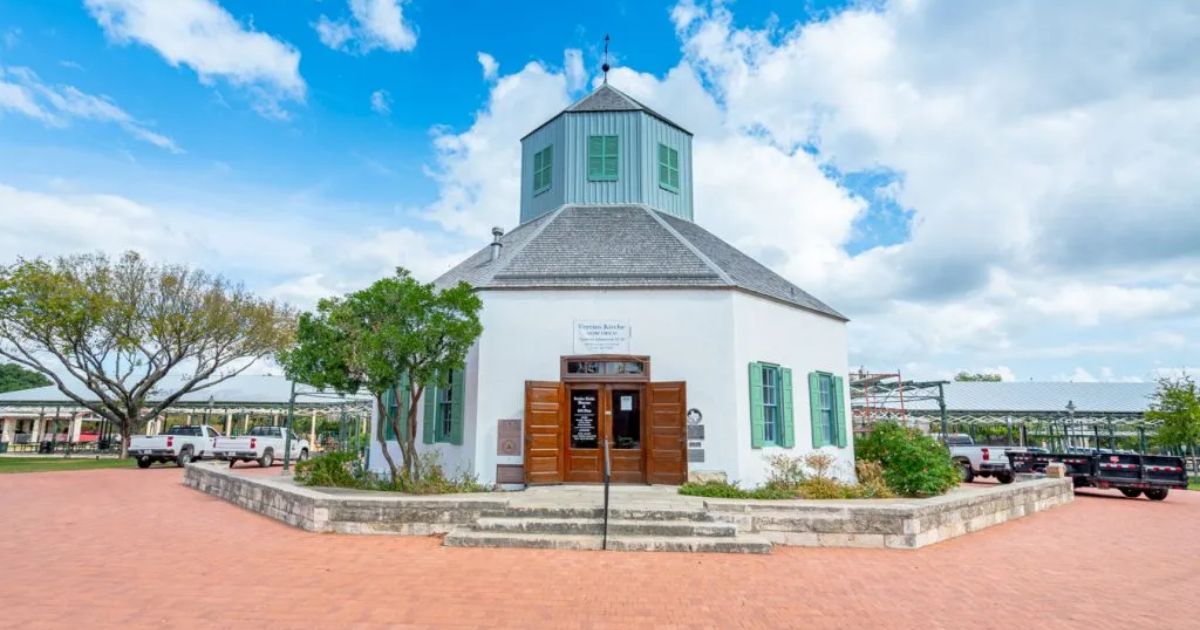Texas is a melting pot of cultures, and one of the most fascinating aspects of its rich tapestry is the influence of German settlers who established vibrant communities across the state.
From quaint villages to bustling towns, these German enclaves have preserved their heritage, offering visitors a unique opportunity to step back in time and experience the traditions, architecture, and celebrations that have withstood the test of time.
In this blog post, we’ll embark on a journey through 13 remarkable German towns in Texas, each with its own distinct charm and story to tell. Get ready to immerse yourself in a world where German community, german heritage, and german architecture blend seamlessly with the rugged beauty of the Lone Star State.
1. Boerne
Nestled in the heart of the Texas Hill Country, Boerne is a gem that has preserved its German heritage with remarkable authenticity.
Established in 1852 by a group of Free Thinker German colonists who fled the revolutions of 1848, this town was initially christened Tusculum. It later adopted its current moniker, a nod to the German author Karl Ludwig Börne.
Today, locals affectionately pronounce Boerne like “bernie,” a testament to the town’s deep-rooted German roots. Visitors can immerse themselves in this rich cultural tapestry by exploring attractions like the Herff Farm, a preserved homestead.
The farm serves as the backdrop for the town’s farmer’s market and community garden. The Kuhlmann-King Historical Complex is a museum showcasing the lives and possessions of the town’s early German immigrants.
Boerne’s Main Street is a veritable time capsule, where the historic Dienger building, once a German pioneer’s home, now houses a beloved clothing store and cafe serving traditional German treats. Nearby, the Tusculum Brewing Co. offers a taste of the town’s modern-day interpretation of its heritage.
While Boerne may not host a large-scale German festival, its German community proudly displays its roots through various events and attractions, making it a must-visit destination for those seeking an authentic slice of Texas’ German heritage.
2. Fredericksburg
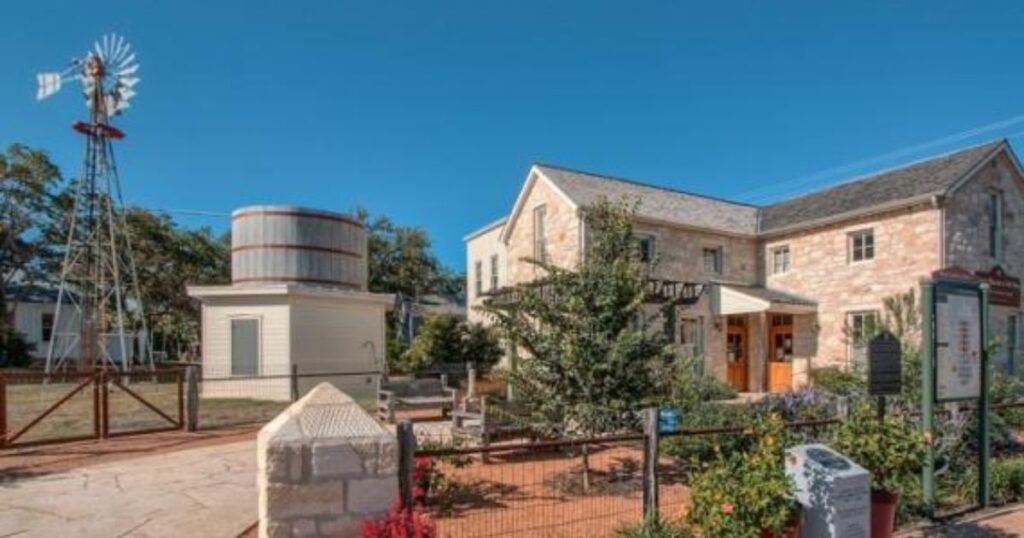
Approximately an hour and a half from Austin, Fredericksburg stands as a shining example of Texas’ German architecture and cultural preservation.
Founded in 1846 by German immigrants, this town initially bore the name Friedrichsburg, honoring Prince Wilhelm Ludwig of Prussia, before adopting its current spelling years later.
What sets Fredericksburg apart is its unwavering commitment to German heritage. Descendants of early settlers even developed their own dialect, known as “Texas German,” a testament to the deep-rooted influence of their ancestors.
Strolling down Main Street is like stepping into a time capsule, with restaurants serving up authentic German treats and shops offering a treasure trove of souvenirs. The Pioneer Museum, a complex of historic buildings, offers a fascinating glimpse into the town’s past through its carefully curated artifacts.
But Fredericksburg’s crowning jewel is undoubtedly its annual Oktoberfest, a tradition that has endured for over four decades. This lively celebration draws visitors from far and wide, eager to experience the town’s vibrant German community through food, music, and revelry.
Read More : Capitol Reef National Park
3. Bellville
Nestled in Austin County, Bellville is a quaint town that proudly embraces its Swiss-German immigrant roots dating back to 1822. As you stroll through its streets, you’ll be captivated by the town’s historic homes and unique building styles, which pay homage to its German heritage.
One of Bellville’s most iconic landmarks is the Germania Cemetery, a historic burial site that offers a poignant glimpse into the town’s past. In the spring, visitors can witness the breathtaking beauty of bluebonnet fields dotting the path leading to the cemetery.
Bellville truly comes alive during the annual Fruehling Saengerfest, also known as the German Spring Singing Festival. This vibrant celebration sees the town’s residents and businesses showcasing their German heritage through traditional foods, live music, and an array of engaging activities.
4. Gruene
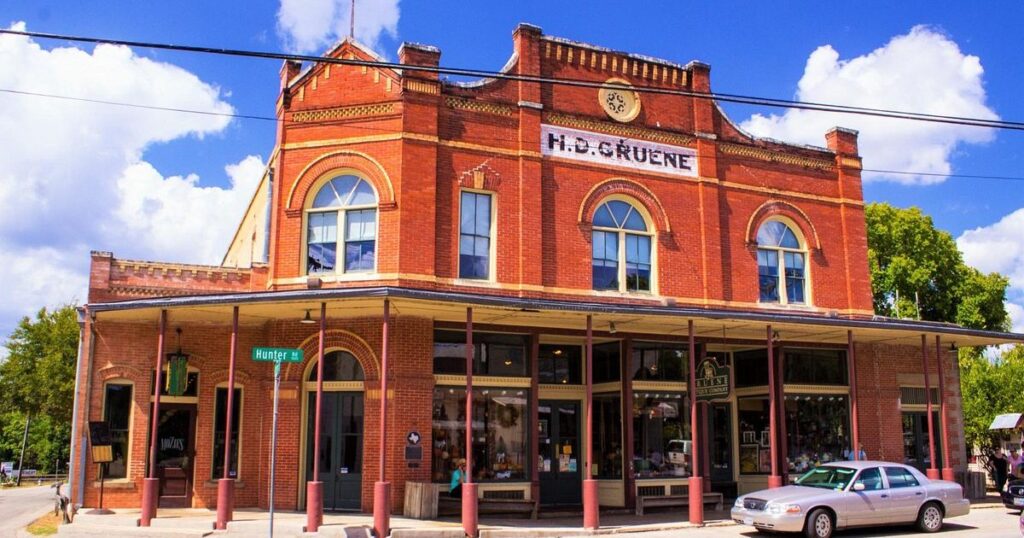
Nestled within the vibrant city of New Braunfels, the Gruene Historic District stands as a captivating time capsule, preserving the legacy of German settlers who established this charming village in the 1840s.
Named after the Gruene family, one of the original founders, this historic district offers visitors a rare opportunity to step back in time and experience a slice of Texas’ German heritage.
As you explore Gruene’s well-preserved streets, you’ll be struck by the remarkable preservation of its 19th-century buildings, many of which have been lovingly maintained to transport visitors to a bygone era.
One of the most iconic landmarks is the Gruene Hall, the oldest dance hall in Texas and a stage that has hosted legendary performers like Willie Nelson and George Strait.
Beyond its architectural wonders, Gruene is a vibrant hub of activity. Antique shops, restaurants, and weekly live music concerts contribute to the town’s lively atmosphere.
And if you’re visiting during the nearby annual Wurstfest in New Braunfels, you’ll have the chance to immerse yourself in even more German celebrations.
5. Weimar
Nestled in the heart of Colorado County, Weimar is a beloved German town that has preserved its heritage with remarkable authenticity.
Established in 1873 by German immigrants who chose the area in anticipation of a new railway, Weimar was initially named Jackson before adopting its current moniker. The name Weimar is a nod to the city of Weimar in Germany.
As you wander through Weimar’s streets, you’ll be struck by the stunning German-influenced architecture, from well-preserved buildings to awe-inspiring churches that stand as testaments to the town’s rich history.
The Heritage Society Museum is a must-visit destination, showcasing an array of artifacts and recorded histories that bring the lives of early German settlers vividly to life.
Weimar’s charm extends far beyond its architectural marvels. The town boasts a vibrant cultural scene, with dance halls, German restaurants, craft distilleries, and breathtaking lavender farms dotting the landscape.
And no visit to Weimar would be complete without experiencing its annual Oktoberfest celebration, where the town’s German heritage takes center stage through food, beer, song, dance, and traditional costumes.
6. Comfort
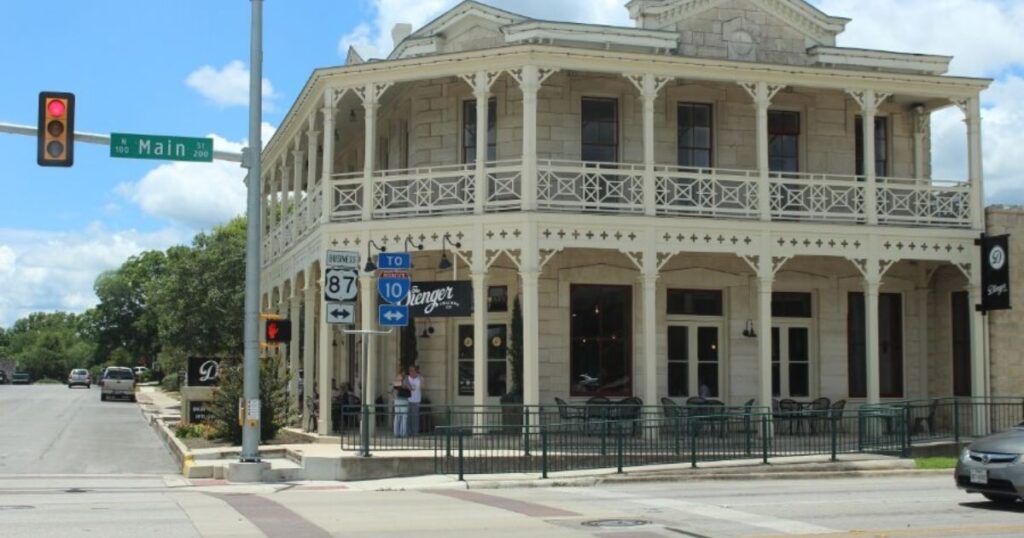
Nestled amidst the natural beauty of the Texas Hill Country, Comfort is a town that lives up to its name, offering visitors a warm embrace of German heritage and small-town charm.
Established in 1854 by a group of German abolitionists and Freethinkers from New Braunfels, Comfort was born from a desire for a peaceful haven surrounded by fresh water and stunning landscapes, earning it the moniker “Camp Comfort.”
The early German settlers in Comfort were determined to create a lasting legacy, and their efforts are evident in the town’s strong and beautiful buildings, many of which have been meticulously preserved.
The downtown area, listed on the National Register of Historic Places, is a veritable open-air museum, with placards detailing the history and significance of each structure.
7. Schulenburg
Schulenburg is a town that proudly embraces its diverse cultural roots, with early settlers hailing from Germany, Czech Republic, and Austria. This melting pot of influences has given rise to a unique and captivating blend of traditions, evident in the town’s iconic Painted Churches.
These awe-inspiring structures feature hand-painted murals and frescoes that draw inspiration from the grand cathedrals of Old Europe, transporting visitors to a world of artistic wonder.
The vibrant colors and intricate details of these murals have been meticulously preserved, ensuring that future generations can appreciate the craftsmanship and dedication of the early settlers.
To delve deeper into Schulenburg’s rich history, a visit to the Schulenburg Historical Museum is a must. This treasure trove of artifacts and photographs offers a fascinating glimpse into the lives of the town’s early residents.
It allows visitors to understand the challenges and triumphs that shaped this unique community. No trip to Schulenburg would be complete without experiencing the annual Sausagefest, a celebration of the town’s Czech and German culinary heritage.
This lively event features cook-offs, polka music, wine tasting, and, of course, an abundance of mouthwatering sausages that pay homage to the town’s cultural traditions.
8. Bulverde
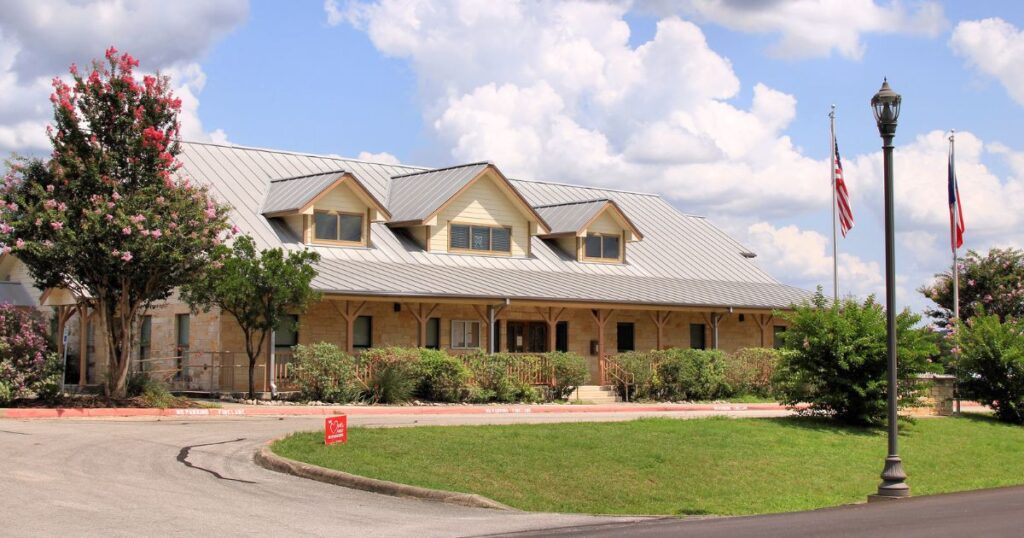
Nestled in the heart of Comal County, Bulverde is a relatively new town, having been officially incorporated in 1999. Its roots stretch back to the 1850s, when German immigrants first settled in the area known as “Piepers Settlement,” named after the German pioneer Anton Pieper.
In 1863, the residents of Bulverde constructed a railway that connected their community to nearby German towns like New Braunfels, Boerne, and Fredericksburg, fostering a sense of unity and cultural exchange among the German settlers.
Today, Bulverde exudes a laid-back charm and stunning natural beauty, with gorgeous homes and chapels dotting the landscape. While it may not be as well-known as some of its German counterparts, Bulverde proudly preserves its heritage through various German restaurants and attractions.
Visitors can immerse themselves in the town’s rural atmosphere by exploring The Farmyard, an interactive experience featuring farm animals, or venture to nearby caverns and local distilleries for wine tastings. Whether you’re seeking a tranquil escape or a glimpse into Texas’ German past, Bulverde offers a unique and authentic experience.
9. Muenster
Nestled in western Cooke County, approximately an hour and a half from the bustling Dallas-Fort Worth metroplex, Muenster is a charming town that celebrates its German roots through stunning art and architecture.
As you stroll through the streets, you’ll be captivated by the vibrant murals that adorn the buildings, creating the illusion of wandering through a European village.
Main Street is a particular highlight, where the oldest buildings showcase distinct German influences and house an array of quirky shops and restaurants.
One of the town’s most iconic landmarks is the Glockenspiel clock tower, located in Fisher’s Market, where visitors can enjoy authentic German cuisine while marveling at the intricate timepiece.
Muenster’s origins date back to 1889, when German immigrants established the town, initially naming it “Westphalia” to honor the region of the same name in Germany.
To avoid confusion with another town bearing the same moniker, the settlers ultimately chose to name their new home after the capital of Westphalia, Münster.
Two major events in Muenster’s calendar celebrate its German heritage: Germanfest in the spring and Oktoberfest in the fall.
These lively festivities offer visitors a chance to immerse themselves in the town’s vibrant German community through traditional food, music, and revelry.
10. Pflugerville
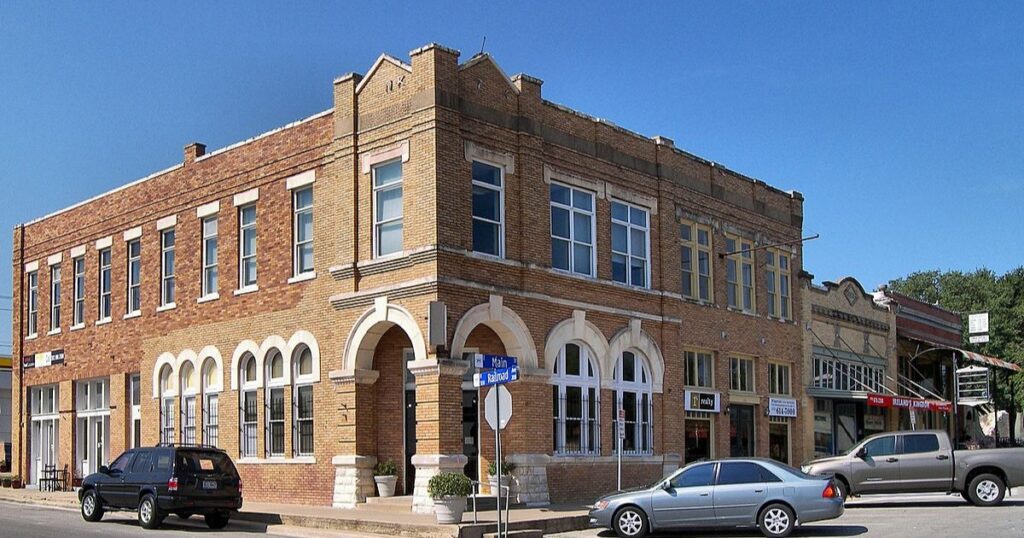
Just 15 miles north of the Colorado River, Pflugerville (pronounced “floogerville”) is a rapidly growing suburb of Austin, currently home to over 66,000 residents. Despite its modern development, Pflugerville proudly embraces its German roots.
These can be traced back to 1849 when Henry Pfluger, a wealthy German farmer, settled in the area after losing much of his land during the Prussian War.”
In 1860, when Henry Bohls established a post office and general store, the town began to take shape, named in honor of Pfluger. After the Civil War, Pflugerville experienced significant growth, bolstered by the construction of a railway in the early 1900s.
Today, amid the sprawling neighborhoods and thriving business community, Pflugerville’s German heritage remains alive and well. Visitors can savor authentic German cuisine at various restaurants.
They can also explore the Pflugerville Heritage House Museum to uncover the town’s rich history through artifacts and artwork. Or they can attend the annual Deutschen Pfest, a lively celebration of German culture featuring music, food, and a myriad of fun activities.
11. New Braunfels
Nestled between San Antonio and San Marcos, New Braunfels is one of the most renowned German towns in Texas, boasting a rich history that dates back to 1845. It was in that year that Prince Carl of Solms-Braunfels founded the town, giving it a name reminiscent of his hometown in Germany.
From its inception, New Braunfels became a haven for German immigrants seeking a new home in the Lone Star State. To fully appreciate the depth of New Braunfels’ German heritage, a visit to the Sophienburg Museum is a must.
This treasure trove of history offers a fascinating glimpse into the lives of the town’s early colonists, allowing visitors to understand the challenges and triumphs they faced in establishing their new community.
The Museum of Texas Handmade Furniture is another gem, showcasing the exquisite craftsmanship of the German settlers through a collection of beautifully preserved pieces.
New Braunfels has done an exceptional job of preserving its German roots, with beautiful buildings, the Gruene Historic District, and an array of exhibits, museums, restaurants, and shops that celebrate its heritage.
Even the town’s local newspaper, the Herald-Zeitung, has been in print since 1852, serving as a testament to the enduring spirit of the German community.
Two of New Braunfels’ most celebrated events are Wurstfest and Wassailfest, which take place in November and December, respectively. These lively festivals attract thousands of visitors each year, offering a chance to experience the town’s vibrant German culture through food, music, and merriment.
12. Luckenbach
While Luckenbach may be one of the smallest towns on our list, with a population of just three people and only two buildings remaining, it packs a punch when it comes to cultural significance and charm. Just 13 miles from Fredericksburg, this tiny gem has become a popular tourist destination, particularly for fans of country music.
One of the two remaining buildings serves as a saloon, dance hall, and post office, while the other is a legendary music venue that has been immortalized in songs by iconic artists like Willie Nelson and Waylon Jennings. Even today, Luckenbach hosts live concerts, keeping the town’s musical spirit alive.
Luckenbach’s origins can be traced back to the mid-1800s when it was established by Carl Albert Luckenbach and his wife, Minna Engel, who opened the general store that still stands today. Initially known as Grape Creek, the town eventually adopted the Luckenbach name in honor of its founders.
While Luckenbach may have been a ghost town by the 1960s, its fortunes changed when it was purchased by an actor and Texas folklorist, who transformed the tiny settlement into the country music destination it is today.
Despite its diminutive size, Luckenbach’s rich history and cultural significance make it a must-visit for those seeking an authentic taste of Texas
13. Brenham
Tucked away in the heart of the Texas Hill Country, Brenham is a small town with a big personality and an even bigger German influence. About an hour and a half from Houston, this charming destination is a must-visit for anyone seeking to experience the Lone Star State’s rich German heritage.
One of the highlights of Brenham’s calendar is the annual Maifest, a lively celebration of spring’s arrival that pays homage to the town’s German roots.
During this festive event, visitors can immerse themselves in a world of traditional music, vibrant costumes, and, of course, mouthwatering German food and drinks.
Around springtime, Brenham’s natural beauty is on full display, with fields of stunning bluebonnets dotting the landscape, creating a picturesque backdrop for any visitor’s journey through this German town.
Brenham’s history can be traced back to the 1820s and 1830s, when it was known as “The Hickory Grove Community.” It wasn’t until 1843 that the town adopted its current name, a tribute to a local physician, Richard Fox Brenham.
The first German immigrants arrived in 1846, and their influence quickly became woven into the fabric of Brenham’s culture.
Today, examples of German architecture can be found throughout the town, with one of the most iconic being the F.W. Schuerenberg House, a sprawling mansion listed on the National Register of Historic Places.
Wrapping Up
From the quaint streets of Boerne to the bustling celebrations of New Braunfels, these 13 German towns in Texas offer an unforgettable journey through a rich tapestry of history, tradition, and cultural exchange.
Each destination boasts its own unique charm, whether it’s stunning architecture that transports you back in time, lively festivals that celebrate the town’s German roots, or mouthwatering cuisine that tantalizes the taste buds.
FAQs
What is the most authentic German town in Texas?
Fredericksburg is considered one of the most authentic German towns in Texas, preserving its German heritage through architecture, festivals like Oktoberfest, and even developing a unique “Texas German” dialect.
In what area of Texas did most Germans settle?
Most German immigrants settled in the Texas Hill Country region, with towns like Fredericksburg, New Braunfels, and Boerne becoming prominent German communities.
How many German towns are in Texas?
The blog post highlights 13 notable German towns in Texas, including Fredericksburg, New Braunfels, Boerne, Bellville, Gruene, Weimar, Comfort, Schulenburg, Bulverde, Muenster, Pflugerville, Luckenbach, and Brenham.
What town in Texas speaks German?
While the “Texas German” dialect was once widely spoken in towns like Fredericksburg, it is now considered a dying language, with very few fluent speakers remaining.
